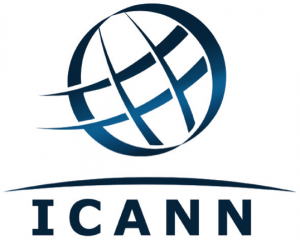One year ago, as part of a plan to expand the capacity of the Internet’s domain name system, the Internet Corporation for Assigned Names and Numbers (ICANN) began accepting applications for more generic top-level domain names (gTLDs). Currently, the well-known gTLDs include .com, .org, and .net, as well as some of the country indicators that have been repurposed, such as .tv and .es. Adding gTLDs will allow for exponentially more domain names. During the new gTLD application period, ICANN opened the door to any combination of three or more letters in most major alphabets: .blue, .school, .mcdonalds, .law or .商城. The possibilities might seem almost endless, but, on “Reveal Day,” ICANN disclosed a list of 1,930 applications for new gTLDs
 What does this mean for trademark owners and businesses?
What does this mean for trademark owners and businesses?
Some procedures have been set up; some are still vague and in development.
At this stage trademark owners can review the list of proposed gTLDs to determine whether their brands, products or industry names are impacted, and then decide the next step to take with ICANN or otherwise.
Note that for trademark owners, proactive prevention is a two-step investigation: Is a newly-applied for gTLD application infringing or somehow offensive? Next, once new gTLD “strings” are finalized, does a newly applied for domain name using one of the new top-tier domains potentially infringe the owner’s mark?
In an effort to avoid yet another round of the early internet “land-grab,” ICANN opened the applications to public comment and formal objections before finalizing the process and launching any new gTLDs. ICANN’s “Application Comment” period will close on August 12, 2012, sixty days after “Reveal Day.” Comments are addressed to the public portions of the application which can be viewed by clicking on a specific application in the new gTLDs list. While anyone is allowed to submit an Application Comment, the scope of those comments is limited to issues which would not be taken up in an objection based on legal rights (such as trademark interests), community representation or public interest (see discussion below). Hence, an Application Comment is not the path for a trademark owner looking to stop a new gTLD on the grounds that the public might confuse the new string with its brand.
ICANN has also created an “Existing Legal Rights Objection” (ELRO), an arbitration-type proceeding that will be run by the World Intellectual Property Office (WIPO). Here, a trademark owner can object to an applied-for gTLD that infringes that owner’s legal rights in its trademark. The WIPO filing window for an ELRO objection will be open for seven months after the new domain “strings” are posted. The WIPO ELRO procedure will be a very limited. Each side will be allowed to file a 20-page brief on the basis of which the WIPO will make a decision. Hearings will be held only “in extraordinary circumstances.” Further, the ELRO rules say that an objection will likely not succeed against a gTLD on “string confusion” grounds (i.e., confusing similarity to another’s trademark) if the applicant for the gTLD has its own legitimate rights or connection to the name. So too, the WIPO will not determine which party – the applicant or the objector – has trademark priority by virtue of its “first use of the mark in commerce.” Thus, many critics of the ELRO rules say that the ELRO may ultimately prove only to be “a good option for objecting to potentially infringing applications that have been filed in bad faith.” Given the limitations of ELRO and the very real claims of trademark infringement, dilution or unfair competition that some trademark owners may have against a new gTLD, federal or state court may actually be the forum of choice in many instances, particularly if a party believes it will benefit from factual discovery.
ICANN offers two other options for objecting to a gTLD application: a “Community Objection” and a “Limited Public Interest Objection.” Each will be handled by the International Chamber of Commerce (ICC). The scope for consideration with a Community Objection appears to be even more limited than that provided by Application Comment and ELRO. Only a party representing a community of persons, an ethnic group for example, whose name is used in a gTLD may make a Community Objection. Finally, the Limited Public Interest Objection defines a rather imprecise standard, allowing an objection if a proposed gTLD is “contrary to general principles of international law for morality and public order.” ICANN cites the Universal Declaration of Human Rights and the Convention on the Elimination of All Forms of Discrimination Against Women as examples of where such principles may be found.
 Even if none of the new 1,930 gTLD applications potentially infringes an owner’s trademark rights, that trademark owner must still guard against others registering its brand as a domain name with a new gTLD once these new strings [gTLDs] are finalized; for example, times, news or apple.inc.
Even if none of the new 1,930 gTLD applications potentially infringes an owner’s trademark rights, that trademark owner must still guard against others registering its brand as a domain name with a new gTLD once these new strings [gTLDs] are finalized; for example, times, news or apple.inc.
ICANN’s newly established Trademark Clearinghouse will provide a mechanism for a trademark owner to protect its trademarks against new domain name applications.
This process will become available after the Comment and Objection options are exercised with respect to potentially offending top-tier domains.
While the exact procedures for the Trademark Clearinghouse are not yet fixed, the registered trademark owner who provides evidence of trademark registration and actual use of its mark gets two preemptive benefits from its Trademark Clearinghouse registration: (1) notification when a third party seeks to register the owner’s mark as a second-tier domain name with a new gTLD (a trademark “watch service”) and (2) the opportunity to file one application to register a second-tier domain name and have it extend to all officially finalized gTLDs (a “sunrise” application).
This “sunrise” domain name application will be available to trademark owners who register with the Trademark Clearinghouse before the domain name application is made available to members of the public who don’t hold a trademark registration. The deadline to file the “sunrise” application is expected to be in January, 2013, but is not yet set as these procedures, too, are still evolving.
It is important to keep in mind, that the “watch service” does not prevent third parties from registering the domain; like other watch services currently available, it only notifies registered trademark owners. If a trademark owner wants to definitively bar someone else from registering its trademark as a domain under the finalized gTLDs, the owner will have to be the first to purchase that domain.
As trademark owners begin to protect their trademarks in this expanded environment of new gTLDs – by either registering with the Trademark Clearinghouse or registering new domain names using the potential hundreds of new gTLDs – ICANN will be receiving more and more applications and registration fees. ICANN, as a not-for-profit organization, reports that if its fee collection exceeds its expenses, “the community” will be consulted about how to use the funds. ICANN is not clear about exactly who will be consulted and how. In the past, some have questioned the real benefit ICANN brings to trademark owners and the associated costs. With this new system, there is, not surprisingly, new criticism, especially as its fee structure is revealed. What is the appropriate price for administration of the ever-expanding world-wide web?

